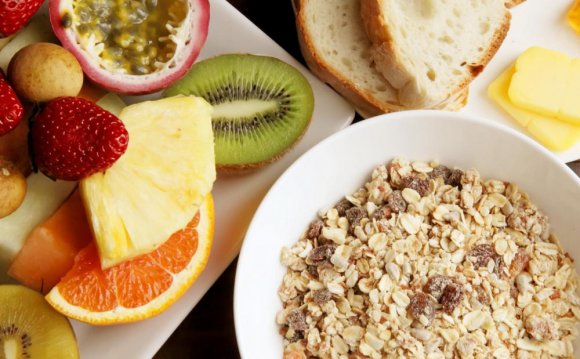
Eating well is key to maintaining strength, energy, a healthy immune system and general lung heath. The key to a healthy balanced diet is not to ban or omit any foods or food groups but to balance what you eat by consuming a variety of foods in the right proportions. At a high level, the basic elements of a healthy diet include the right amount of protein, fat, carbohydrates, vitamins, minerals and water.
Protein:
Essential to the building, maintenance, and repair of body tissue such as the skin, the internal organs, and muscle, proteins are the major components of our immune system and hormones. When choosing protein-rich foods, pay attention to what else you are getting with that choice (i.e. choices high in saturated fat known to raise blood cholesterol putting us at risk of heart disease and stroke). Vegetable sources of protein, such as beans, nuts, and whole grains are great choices and offer healthy fiber, vitamins and minerals. The best animal protein choices are fish and poultry; however, for those partial to red meat, you should stick with the leanest cuts, choose moderate portion sizes, and make it only an occasional part of your diet.
How much protein should you eat? The amount of protein you need depends on many factors including age, sex, and level of physical activity. The WHO (World Health Organization) set the minimum protein intake at about 1/3 of a gram of protein per pound of bodyweight. Following is a chart from the United States Department of Agriculture’s (USDA) June 2011 recommended daily amounts.
USDA Daily recommendation*
4-8 years old
4 ounce equivalents
14-18 years old
5 ounce equivalents
14-18 years old
6.5 ounce equivalents
31-50 years old
51+ years old
5 ounce equivalents
5 ounce equivalents
31-50 years old
51+ years old
6 ounce equivalents
5.5 ounce equivalents
A simple trick for knowing the right portion sizes along the course of the day is to us the size of a deck of cards or the size of your palm (minus the fingers) as a guide.
Fats:
Fat is good and a necessary part of any healthy diet. What is important is the type of fat you eat. Here’s the bottom line when it comes to fats:
Nutrition experts agree that most Americans should eat less fat than they currently do. Research shows that excessive intake of fat - especially trans fat and saturated fat - and cholesterol increases the risk of heart disease; however, keep in mind the biggest influence on blood cholesterol level is the mix of fats in your diet—not the amount of cholesterol you eat from food. Cholesterol isn’t necessarily the villain it has been portrayed to be.
Carbohydrates:
Probably the most misunderstood of all the calorie-producing foods, ‘carbs’ have been avoided at all costs by dieters of all shapes and sizes. Like good and bad fats, there are good and bad carbohydrates – at least ones that are better or worse for you (i.e. nutrient-rich carbs such as whole grains, fruits, vegetables, and legumes vs. foods devoid of nutrition such as processed foods, candy, pastries, cookies, and soft drinks and fruit drinks.) So, here are some guidelines on carbs:
Vitamins & Minerals:
Both vitamins (i.e. vitamins A, B, C, D E, and K) and minerals (i.e. calcium, potassium and iron) are vital to the proper function of the body. Vitamins and minerals must come from the diet since the body doesn’t make them.
The 13 essential vitamins are divided into two categories.
Many minerals, like water-soluble vitamins, must be taken in relatively large amounts (i.e. calcium, potassium, and iron.) Others, like trace minerals (i.e. zinc, selenium, and copper) require only small amounts for good health.
The American Dietetic Association (ADA) recommends we get the vitamins and minerals our bodies need directly from the source – food, but nutrients from supplements can help some people meet their nutrition needs.
Water:
INTERESTING VIDEO












